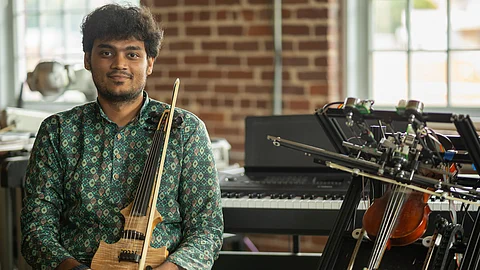

Raghavasimhan Sankaranarayanan, a doctoral student in music technology at Georgia Institute of Technology, has developed a robotic violinist capable of performing Carnatic music.
Sankaranarayanan's creation is designed to capture the various nuances in Carnatic music, which enables the robot to not only play compositions but also to engage in real-time improvisation alongside human musicians.
"It's like a duet partner," Sankaranarayanan explained in an interview with The Telegraph. He adds, "It listens, learns, and sometimes surprises you with phrases you hadn't thought of. That's the magic of it."
The development process involved analysing hundreds of hours of Carnatic music recordings to teach the robot the essential gamakas (decorative vocal elements on a note or between two notes).
By feeding this data into machine learning models, Sankaranarayanan enabled the robot to understand and replicate the subtle transitions between notes that are crucial to the genre's emotive expression.
“It's not just about hitting the right notes. It's about how you move between them, how you glide, oscillate, or pause to create emotion,” he explains.
Sankaranarayanan's motivation stemmed from a desire to address the underrepresentation of Indian music in the fields of Artificial Intelligence (AI) and robotics.
He observed that Western music often dominates these areas due to its well-documented and standardised nature, whereas the improvisational and richly nuanced Indian music lacks sufficient clean, usable data for technological applications.
By creating a robot that comprehends and performs Carnatic music, Sankaranarayanan aims to contribute to both the preservation and modernisation of the art form.
He envisions applications in education, where the robot could serve as a teaching aid, especially in remote areas where access to traditional in-person training under a guru is limited.
"This isn't about replacing human musicians. It's about augmenting their abilities and creating new possibilities," he clarified.
The robot has already participated in live concerts, interacting with musicians in real-time, demonstrating its capability to respond and improvise within the structured framework of Carnatic music, The Telegraph reports.
